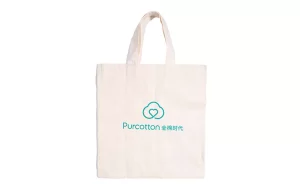Choosing the right type of bag for shopping or promotional purposes involves understanding the material and construction. Woven and non–woven cotton bags are two common options, each offering unique features. At Winner Nonwovens, we specialize in high-quality non-woven bags that combine durability with practicality. Knowing the differences between these two types helps businesses and consumers make informed decisions.
Construction Methods and Materials
The primary distinction between woven and non-woven bags lies in how the fibers are assembled. Woven bags are made by interlacing threads in a crisscross pattern, creating a fabric with a tight structure. Non woven bags, on the other hand, are made by bonding fibers together using heat, pressure, or adhesive without weaving. This method produces a bag with a uniform surface and flexibility. Winner Nonwovens manufactures non-woven cotton bags that provide strength and smooth texture suitable for various uses.
Durability and Strength
Woven bags are generally strong due to the interlaced fibers, making them suitable for carrying heavy items over long distances. Non woven cotton bags also offer notable durability, but they are lighter and more flexible than woven bags. The bonding process of non-woven materials ensures that the bag can withstand daily use without tearing. At Winner Nonwovens, we focus on producing non-woven bags that balance strength and convenience for repeated use.
Appearance and Texture
The texture of woven and non-woven bags differs significantly. Woven bags have a more textured surface due to the interlacing threads, while non-woven cotton bags are smoother and softer to the touch. This smooth surface makes non-woven bags ideal for printing logos, brand messages, or decorative designs. Winner Nonwovens ensures that our non-woven bags provide a high-quality surface suitable for visual applications.
Environmental Considerations
Both woven and non-woven bags offer reusable alternatives to single-use plastic, but their environmental impact can vary. Non woven cotton bags combine natural fibers with a reusable design, making them biodegradable and sustainable when properly disposed of. Woven bags, depending on the material used, may also be reusable but can be less eco-friendly if synthetic threads are involved. Winner Nonwovens focuses on producing non-woven bags that meet sustainability goals while providing long-term usability.
Cost and Practicality
Non woven cotton bags are often more cost-effective to produce than woven bags, especially in large quantities. They are lightweight, easy to fold, and convenient for storage. Woven bags may require more complex manufacturing processes, which can increase costs. Winner Nonwovens provides non-woven bags that offer a practical and budget-friendly solution for businesses and consumers alike.
Conclusion
Woven and non-woven cotton bags differ in construction, durability, texture, and environmental impact. Non woven cotton bags offer flexibility, smooth surfaces for printing, and practical reusability. As a trusted non–woven bags manufacturer, Winner Nonwovens is committed to delivering high-quality bags that meet the needs of businesses and everyday users. Understanding these differences allows users to select the right bag for their purposes while supporting sustainable practices.











